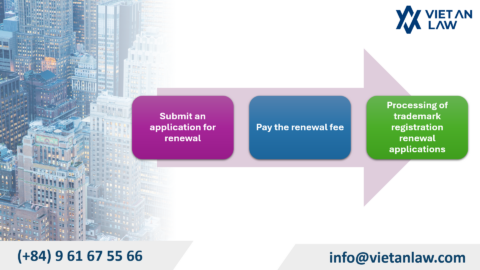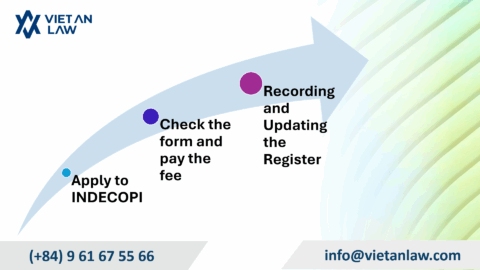Nowadays, People often refer to the phrase “brand power – difference creates value”. It can be seen that brand is one of the most important factor that business investors are aiming to build for their products and services with specific characteristics, including trademarks. Brand is a factor that can impact on the strongest psychology of consumers. Have you ever wondered: why are people willing to buy Louis Vuitton bags for millions of dollars but other domestic bags companies only cost a few hundred thousand VND? It not only has a difference in product quality but also in the brand of the product.
Being aware of the importance of trademarks for goods and services, Viet An Law Firm will guide the basic regulations on trademark registration in Vietnam as follows:
Table of contents
According to Article 72 of the Vietnamese Intellectual Property Law, clearly stated that a trademark with the registration ability must have a “visible” sign. In the TRIPs Agreement, “visible” is understood to be visually identifiable. Auditory or taste-aware signs such as taste, sound, etc., are not visible and therefore cannot be used for trademark registration. “Visible” signs are divided into the following three basic groups:
The first expression of a two-dimensional sign is words, letters, characters, numbers, conventional symbols, and slogans. This type of sign includes only readable elements: a sign contains one or more words, with or without meaning; conventional letters, characters, numbers or symbols; or a combination of such elements, including slogans and advertising messages. These signs do not include any background elements, frames, or graphic elements. The word mark also includes signs such as individual signatures, which may be real or stylized names. Currently, many famous brands, especially fashion brands often use stylized personal signatures to brand products.
A figurative sign is a two-dimensional sign that is visible in a trademark registration, consisting of one or more two-dimensional graphic elements such as a logo, number, device, abstract or fantasy geometry or a two-dimensional shape that was created on purpose. The color element is also considered a mark of identification, but simple figures that include only words, letters, characters, numbers or conventional symbols may cause a mark to be restricted. The ability to register due to these factors has not yet reached the “distinguishability” of the goods.
Currently, trademark registration they use many mixed signs, this type of sign is a combination of one or more conventional words, letters, characters, digits or symbols with one or more non-script graphic signs or elements.
In the registration of a trademark, the color recognized as a trademark needs to be expressed in a specific shape or need to have clearly defined lines combined in a uniform, identifying and distinctive manner.
According to Article 72 of the Intellectual Property Law, a protected trademark is a visible sign in the form of letters, words, three-dimensional or a combination shown in one or more color; be capable of distinguishing trademark owners’ goods and services from those of other entities. Therefore, it can be seen that Vietnam’s legal regulations accept color protection as a trademark, however, in fact, in registering a trademark in Vietnam, a single color or a set of colors does not form a specific mark is not protected as a trademark but usually a color mark is protected only if it is a pictographic, text, three-dimensional or combination mark represented by one or a set of colors.
Three-dimensional signs are types of cubes that are likely to be registered as trademarks, such as shape of goods, product packaging, etc.
In order to be granted protection, the following types of three-dimensional signs may be distinctive, in the following specific forms:
Currently, according to Vietnam’s Intellectual Property Law 2005 (amended in 2009), simple geometries are indistinguishable, so simple geometries in three-dimensional space such as cubes, spheres, cylinders, pyramids, etc. are not recognized by Vietnamese law as trademarks.
Some of the famous three-dimensional brands such as the monolithic flying horse of Rolls-Royce, the lion standing on two feet of Peugeot, …
Besides, signs of motion (animation), holograms and signs “position” are also signs to determine trademark registration. A “position” means a sign, a mixture, a color or a hologram attached to a specific part of or a specific place on the goods that the trademark needs to distinguish. Marks of this type shall be fixed at the same position on the goods of the trademarked object, according to the size or the proportion commensurate with the size of the goods. The location sign is a quite unique sign that has been registered in many countries around the world, but in Vietnam this sign has not been widely used, and there is almost no requirement for a trademark registration to follow this sign.
According to the law on trademarks in Vietnam, only visible signs are allowed to register their trademarks in Vietnam, thus eliminating the possibility of registering trademarks of sound, taste, etc.
However, it can be said that, in some countries in the world, the signs of color, sound and so on are still possible to register, depending on the regulations of each country. Different from the “visible” sign, the unseen sign is greatly restricted in trademark registration, especially the ability of the registration of the unseen signs will depend on whether the mark is can be represented graphically or not.
For example, according to Singapore’s Brand Law, if a sign consisting of melody, bell, sound, song or other sounds is clearly and accurately represented by the music notation system, then the musical symbols must be accompanied by the application for trademark registration and as such should be sufficient to meet the graphic representation requirements.
According to Vietnamese law, the distinguishability of trademarks is one of two important factors to consider and permit trademark registration. A mark is considered to be distinguishable if it is made up of one or several easily recognizable elements or from many factors combined into a recognizable, easily memorized and not belonging whole the case is considered incapable of distinguishing as prescribed by law.
Trademarks are able to distinguish them from other brands for the same group, the same type of products and services not only to ensure the interests of consumers, but also to guarantee the rights and interests of businesses. A trademark considered distinctive must not fall into the following cases:
Trademark registrants may cite distinction to oppose the assessor’s decision by saying that the mark is non-discriminatory, general or descriptive. The applicant is responsible for proving it, but the examination agency may supplement the evidence submitted by the applicant with any relevant information obtained from various sources.
Signs that are deceptive or misleading when used are not registered as trademarks for goods and services. One sign that is considered deceptive is that when used in commerce in connection with the goods or services concerned, it will lead to false or misleading information about the goods and services. At this point, deceptive and misleading information is conveyed by signs regarding the nature, object, quality, geographical origin, quantity, size, purpose, benefit, value or other relevant characteristics of goods and services.
The nature of deception can be considered in the following aspects:
Signs that are geographically deceptive: for example, the brand “Moc Chau Thanh Ha Fresh Milk” may be rejected if the milk product does not originate from Moc Chau. Because, the phrase “Moc Chau fresh milk” in the brand may cause consumers to associate or infer to the origin of the product.
Official certification reference for signs of a deceptive nature: a mark containing the word “ISO Certification”, or “Inspection – BSI” should not be accepted for protection registration, if organizations have the names in those trademarks are authorized to promulgate such standards / certifications and disagree with the use of this mark. Similarly, in Vietnam the terms “American technology” and “European standards” will be rejected because the registry thinks they are deceptive to comply with the standards.
This is the current regulation of trademark registration in Vietnam, the regulation is the basic principles and standards applied at the trademark registrar. However, this regulation does not determine the result of a substantive examination of a trademark application, or whether a trademark is registered or not, and the trademark registrar retains all rights in the examination and evaluation of registration ability of the manual.
Client have demand to registrate a trademark in Vietnam, kindly contact Viet An Law to get the best dedicate and cost-effective professional service!




